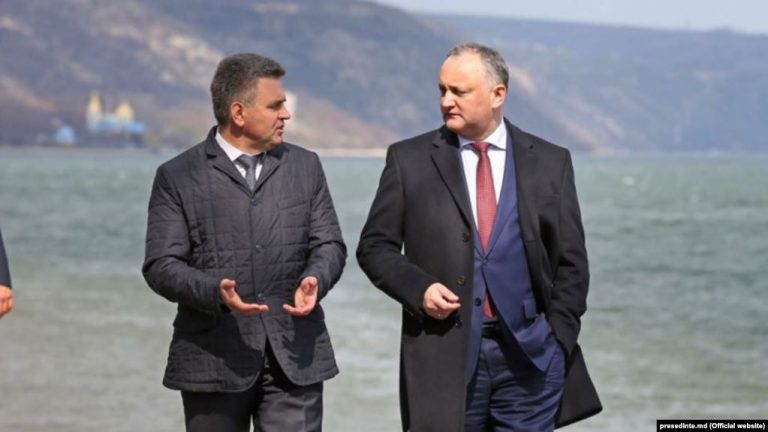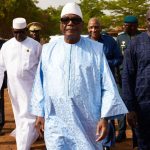Moldova reverts to the plans for reintegration of Transnistria separatist republic developed in 2003. This initiative is obviously revived from the outside and does not come from the leadership of this country.
The series of reintegration processes and management staff turnover in pro-Russian enclaves and unrecognized states initiated by Moscow has started from the last midyear, a case study proves.
On February 7, 2020, President of Moldova Igor Dodon published a video message on his Facebook page, where he offered a wide autonomy within the country for unrecognized Transnistria. Dodon voiced the necessity to find a quick way out of the situation with the two territories, and to unite them.
At the same time, the President of Moldova emphasized that Transnistria’s economic reintegration is de facto already being carried out.
Transnistria unilaterally withdrew from Moldova as a result of the armed conflict of 1990-1992. The conflict de facto ended with the introduction of the Russian military contingent, which established control over the territory and its pro-Russian puppet leadership. Russia directs financial resources to support the PMR’s functioning. However, the load on Russia’s financial resources has increased significantly with the increase in the number of occupied controlled territories (unrecognized Abkhazia, South Ossetia, the DPR and LPR). Moscow tried to transfer payment for natural gas to Moldova several times, but Chisinau categorically refused because of excessive costs.
Similar processes of territorial reintegration are undertaken in Ukraine, conditioned to be presumably imposed from outside as well. This is probably due to some changes in the Kremlin, where Vladislav Surkov, who oversaw pro-Russian extraterritorial state projects, was replaced by Dmitry Kozak, who dealt with the issue of Transnistria in early 2000.
In January 2020, the leadership of Abkhazia, a self-proclaimed republic controlled by Russia since the Russian-Georgian war of 2008, changed. The theft of Russian funds designated for Abkhazia was one of the reasons for that.
The reintegration of pro-Russian territories is a part of a systematic approach to Russia’s financial costs reduction. It provides for the transfer of pro-Russian territories to self-sufficiency and subsidies from the states to which these territories are returned. At the same time, the conditions for reintegration suggest that Russia retains full political control over such territories. Thus, the Kremlin intends to stop financing unrecognized republics, but to maintain control over them, thus enabling itself to control countries where these territories will be formally returned.
Transnistria’s independence should not be regarded as a scenario and as granting the status of Russia’s sub-sovereign, President Dodon says. There is no doubt that this statement voices the Kremlin’s position. This is also evidenced by the reintegration format mentioned – Moldova’s federalization. Moscow offers Ukraine a similar approach.
It is significant that the federalization scenario does not sound in plans to resolve the situation in Syria and Libya, where such format could be considered as a model that suits the main actors. The difference is that Russia’s actions there focus on creating a system controlled by specific individuals and political elites: Bashar al-Assad and Alawites in Syria and Khalifa Haftar in Libya. This is a military-political issue. In the post-Soviet space, the Kremlin is keen on controlling all social processes and establishing control over the military-political sphere through them. In fact, Moscow considers this region as its own electoral field, which can be ultimately combined with Russia in the format of a confederation, likely to become a revival for the Soviet Union, according to the Kremlin.
Moldova is obviously the easiest reintegration project to implement, according to the Russian leadership, since there is no armed confrontation in relations between Chisinau and Tiraspol.
Russia considers the implementation of the scenario as a priority, according to which the pro-Russian President of the Republic of Moldova initiates and signs an analogue of the “Kozak’s Memorandum” as part of the reintegration for the unrecognized Pridnestrovian Moldavian Republic into the Republic of Moldova. Despite the fact that the Constitution of the Republic of Moldova provides for rather narrow powers of the President, his powers include initiating a referendum (Article 88 (f) on issues of national importance, which is mandatory for amending the Constitution in order to change the form of government.
The 2003 edition of the Kozak’s Memorandum stipulated that Moldova should become an “asymmetric federation”, and the PMR and Gagauzia would receive special status and the ability to block bills that are undesirable for autonomies. Moldova pledged to maintain neutrality and demobilize the army, as well as provide Russia with the right to deploy Russian troops on the territory of Transnistria for a period of 20 years as guarantors of a conflict settlement.
The existence and support of such scenario is indirectly evidenced by the OSCE Declaration, lobbied by Moscow and adopted in Belgrade on December 6, 2015, according to which Transnistria is offered a special status as part of Moldova. The statement of the Vice Prime Minister for Moldova’s Reintegration, Georgy Balan, claiming that Chisinau favors providing the Transnistrian region with a special legal status but excludes any discussions about the possible federalization of Moldova, is noteworthy in this context. Similar warnings against federalization are voiced in Ukraine as well.
At the same time, elements of a federation may de facto exist in a unitary state. The pro-Russian lobby once established the special status for the Autonomous Republic of Crimea in Ukraine in the 1990s. Consequently, it’s not necessary to formally enshrine the federalization of the Republic of Moldova in the constitution in order to meet Russia’s interests, but Moscow will most likely insist on exactly such format. This scenario implemented in Moldova will de jure allow to reintegrate 0.5 million residents of the unrecognized PMR into the 3.5 million RM with the following political consequences:
1. The Russian contingent is preserved and strengthened in the PMR as part of the Republic of Moldova, i.e., a Russian base is deployed in the territory of the Republic of Moldova thus blocking any Euro-Atlantic aspirations of Chisinau.
2. Parliamentary and local elections, bearing in mind the PMR population’s will, which completely changes the electoral and political map of the Republic of Moldova with the receipt of a pro-Russian majority in the Moldovan Parliament.
3. The Parliament of the Republic of Moldova initiates foreign policy changes, proclaims the EAEU integration course.
4. Nearly 200 thousand citizens of the Russian Federation from among the Transnistrian population are infiltrated in the Republic of Moldova.
5. The Russian Federation reduces costs to support the PMR’s functioning.
At the same time, the new elites will doubtfully accept the reintegration of territories controlled by Russia. For example, in Transnistria, political and economic processes have been controlled by a so-called Sheriff group over the past 30 years, which is actually a merger of business, law enforcement agencies and criminals. It controls the entire business in the territory of the unrecognized republic and even participates in export-import with the EU countries. There are doubts that representatives of this group will agree to lose control over financial flows, politics and the situation in the republic. Reintegration into Moldova means the return of Moldova’s laws, its governing bodies, courts and tax institutions to Tiraspol.
The situation with reintegration is even more critical in the self-proclaimed republics of Donbass. Local political elites are represented by militant leaders and Russian citizens. Most of them had no background until 2014 and were marginalized. Reintegration into Ukraine means a loss of their current influence and a return to marginality for them. Therefore, the unrecognized DPR and the LPR leadership has repeatedly declared the unacceptability of returning to Ukraine. However, it is precisely in these territories that the Kremlin has great potential for forcible change of the political pattern. For example, in 2015-2016, some field commanders who had their own vision of the republics’ development and claimed political leadership were destroyed with the help of the Russian special services.
The reintegration of Transnistria will consequently be Russia’s first step towards the Soviet Union’s revival through federalizing the countries where Russia-controlled self-proclaimed republics are located. At the final stage, it is likely that a union state will be created on the basis of the Russia-Belarus union state model, but with completely controlled elites and a single Russian national electoral field, thus enabling Moscow to establish communication with all controlled territories.




